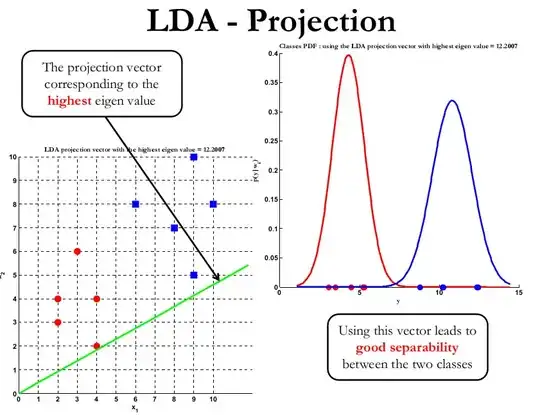I have the situation where I want to distinguish between two classes $C_1$ and $C_2$, where $C_2$ consists of three different types of subclasses $C_{2,1}$, $C_{2,2}$ and $C_{2,3}$. Also, it is easy to generate samples of type $C_{2,1}$, $C_{2,2}$ and $C_{2,3}$, but hard to generate them for $C_1$.
The basic classification problem is to classify whether given sensor signals stems from events in $C_1$ or $C_2$, and I use 6 features of the signal - such as mean, std dev, integral ... - as features for the classification algorithm.
I would be interested in advice about how to deal with this situation.
For me there are two natural approaches for distinguish between two classes $C_1$ and $C_2$:
1) Train a classifier on $n$ samples of $C_1$ and $n/3$ samples of $C_{2,1}$, $C_{2,2}$ and $C_{2,3}$ respectively.
2) Have 3 classifiers, distinguishing between $C_1$ and $C_{2,1}$, $C_1$ and $C_{2,2}$, $C_1$ and $C_{2,3}$, where each classifier is trained on $n$ samples, and then report that the outcome is $C_1$, if all three (or maybe 2) report $C_1$.
How would you approach such a situation?
